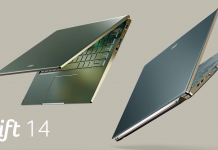Last updated on December 8th, 2022 at 02:18 pm
Problems with the 10-nm process technology continue to ruin Intel’s plans, and 7 nm wait a long time
Intel’s management has repeatedly promised in public that within the framework of 7-nm technology it will be able to return to the usual frequency of lithographic technology changes – once every two or two and a half years. The debut of the computing accelerator Ponte Vecchio, which will be the first-born in the 7-nm process technology, is scheduled for the very end of 2021. The mass production of 7-nm Intel products will not be able to start before 2022.
Don’t forget to leave us a comment below and let us know what you think!
Share Our Website for Technology News , Health News , Latest Smartphones , Mobiles , Games , LifeStyle , USA News & Much more...





